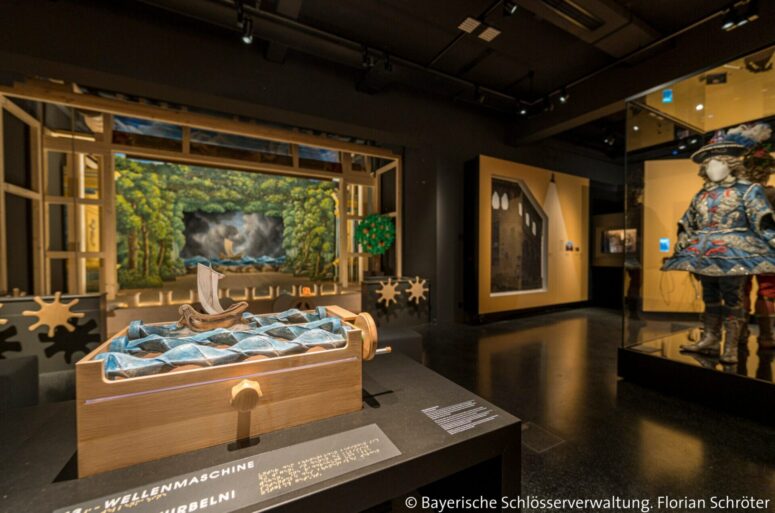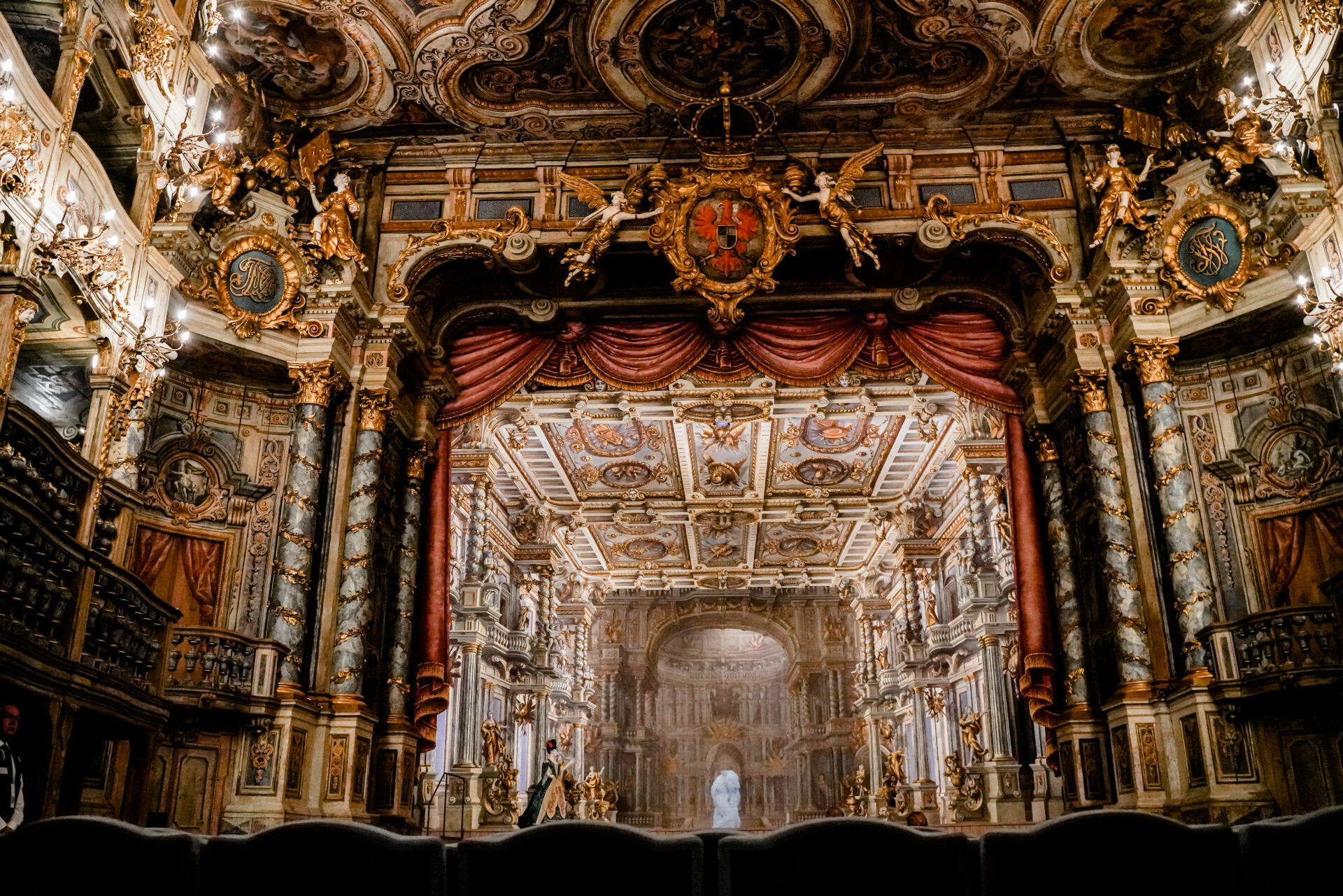
Immerse yourself in the world of Baroque:
The Margravial Opera House is the best-preserved example of a freestanding Baroque court theatre. Built between 1744 and 1748, the model for the construction were the largest opera houses of the time, in Vienna and Dresden. As a unique monument to the festival and musical culture of the 18th century, it has been on the UNESCO World Heritage List since 2012.
Information for your visit
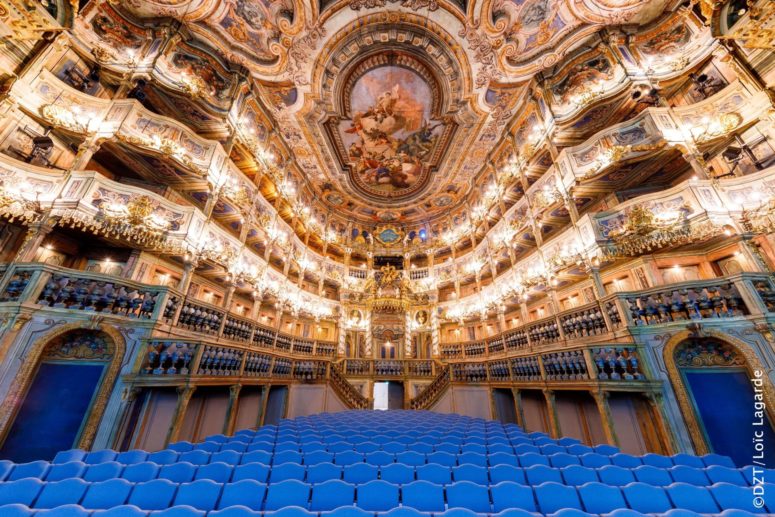
Opening hours
April-September: daily 9 am-6 pm (last entrance: around 5.15pm)
October-December: daily 10 am-5 pm (last entrance: around 4.15pm)
January-March: daily 10 am-4 pm (last entrance: around 3.15pm)
The Margravial Opera House may be closed temporarily due to event rehearsals, learn more.
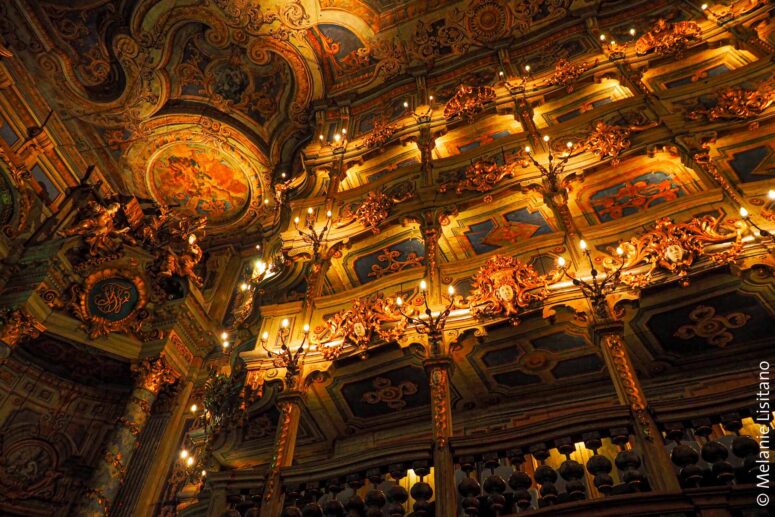
Admission fees
Margravial Opera House: World Heritage & Museum
10,- Euro regular · 9,- Euro reduced
Combination ticket “New Palace + Margravial Opera House: World Heritage & Museum”
15,- Euro regular · 13,- Euro reduced
Combination ticket »The World of Wilhelmine«
(Opera House, New Palace, Old Palace Hermitage, Fantaisie Palace, Zwernitz Castle)
21,- Euro regular · 19,- Euro reduced
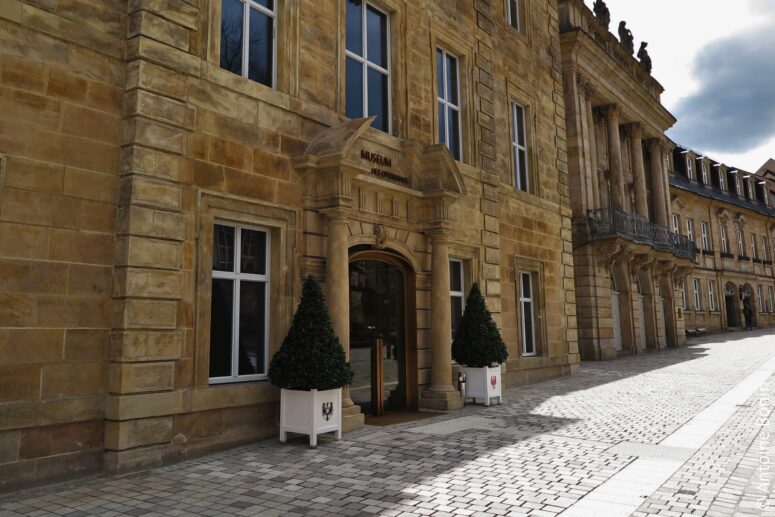
Tickets
Tickets for your visit can be purchased directly at the Opera House’s box office. You can get there by entering the building through the glass door with “Museum” written across it. (The opera house can only be entered through this entrance, not through the large gray double doors.) You may also purchase your ticket online in advance.
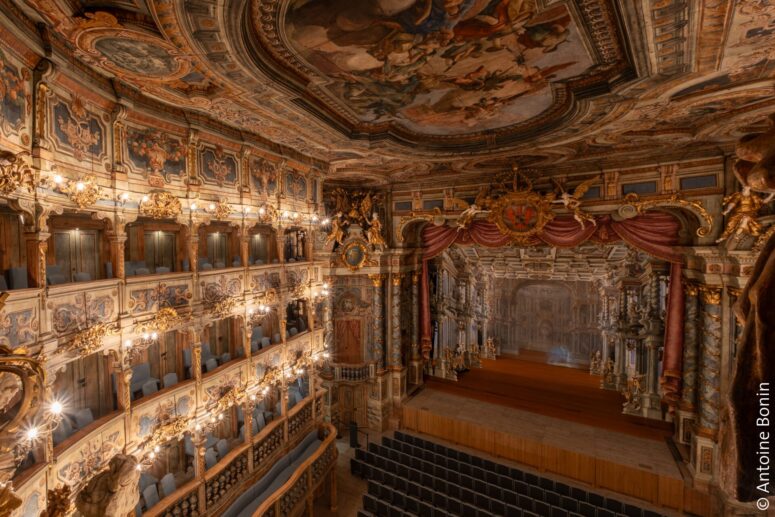
How to get there
Opernstraße 16
95444 Bayreuth
Tel.: +49 921 7596922
Fax: +49 921 7596932
By bus:
Distance: ZOH- St. Johannis/ Birken/ Aichig
Line: 302, 304, 307,
Leave the bus at: Luitpoldplatz, Walking distance 1 minute
Events
The Margravial Opera House does not have a permanent ensemble. Nevertheless, concerts of different styles and venues take place throughout the year (usually between May and October) amid the fairytale opera backdrop.
More information about the Margravial Opera House
The history of the house
Margravine Wilhelmine of Brandenburg-Bayreuth (1709-1758) was an avid music and theatre lover. The theatre was built for the lavish festivities surrounding the wedding of her daughter, the Bayreuth princess Elisabeth Friedericke Sophie and duke Carl Eugen of Würtemberg in September 1748.
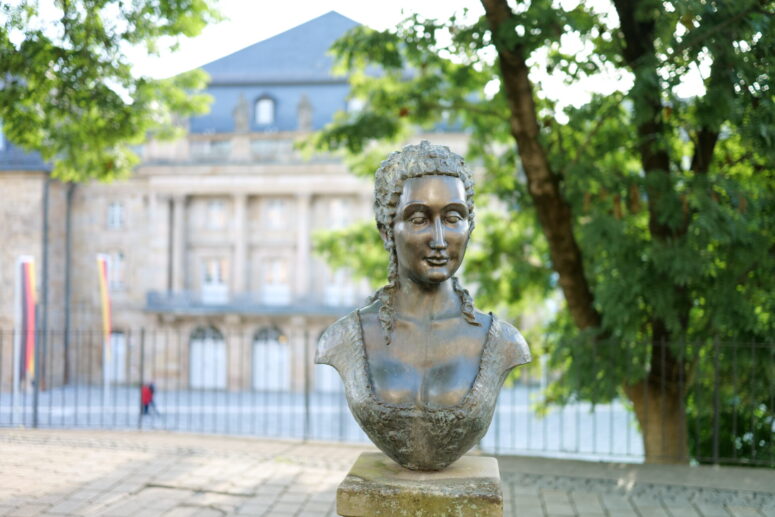
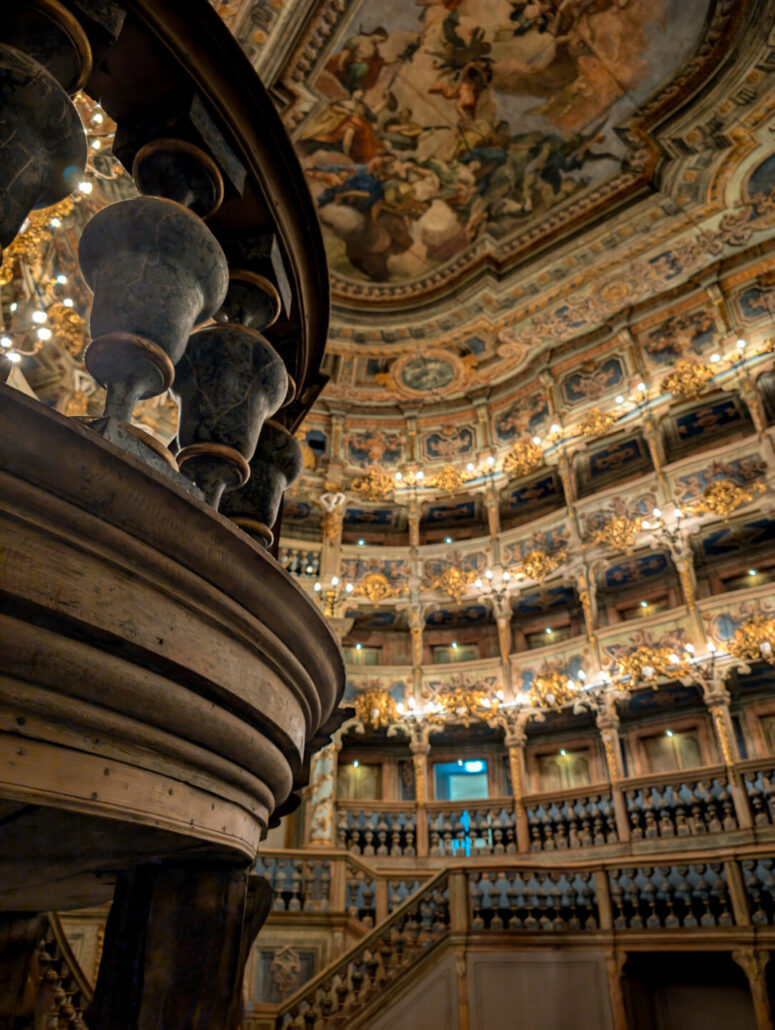
About the architecture
The margravial opera house is modelled after Italian lodge theaters of that period. The fully preserved tiers of the lodges made primarily of wood and canvas, are installed as a free standing construction within the stone exterior.
The interior of the theater was constructed in record time with some of the wooden architectural elements and sculptures prefabricated and painted elsewhere. Thus a masterpiece of ephemeral festival architecture was completed from 1744 to 1748 in under four years.
The architect appointed to design the new opera house was the leading architect for theatres of the day, Giuseppe Galli Bibiena, an Italian who had been working for the Viennese Imperial court. His son Carlo Galli Bibiena was responsible for the project in Bayreuth and he remained at the court until the death of the margravine, creating numerous stage designs and festival decorations.
The museum
In the adjoining former comedy and redouten house, from April 2023 on, elaborately designed exhibition spaces presents fascinating insights about the Bayreuth Baroque theatre as well as about baroque theatre practice on and behind the stage.
Numerous interactive stations, models and originals immerse you in the history of the UNESCO World Heritage Site and the exciting music and theatre landscape of the 18th century.
